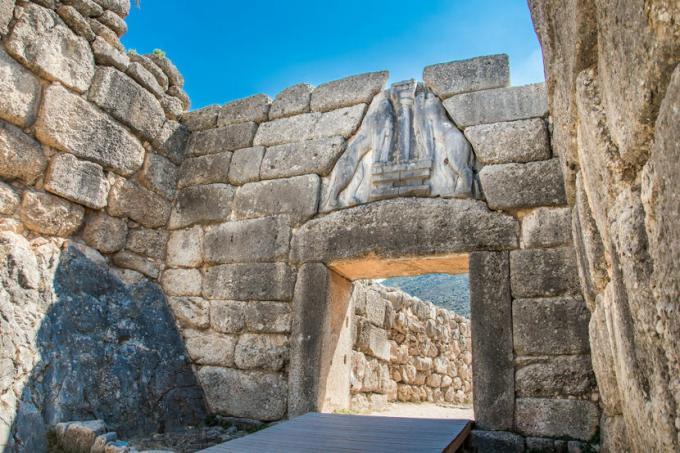The city of Moscow it is the capital of Russia and the political and economic heart of the country. Inhabited by more than 12 million people, the Russian capital dates back to the year 1147, according to historians. As a city with more than 800 years of history, it is natural that Moscow has a series of buildings that annually attract millions of tourists.
An important part of Moscow's history and cultural life is concentrated in the building complex of the Kremlin, including museums, churches and government buildings that were built inside the Muscovite fortress. Of course, there are not only historic buildings inside the Kremlin, but also outside it.
In any case, an important part of the historical legacy of Russian culture is the Orthodox churches. Historically, Russia has consolidated itself as a nation under the strong influence of the Orthodox Church and despite the attempts of the regime eradicate with religion in the country, it has survived, and part of its legacy is seen in the series of historic churches built in Moscow. This text aims to talk a little about one of these constructions.
St. Basil's Cathedral
Probably the best-known religious building in Moscow and perhaps all of Russia is the St. Basil's Cathedral, mainly because of its towers with colorful domes. This church is officially known as Cathedral of the Intercession of the Most Holy Theotokos and was built by order of the tsar Ivan the Terrible (also called Ivan IV), in the period between 1555 and 1561. It is located in Red Square, in the vicinity of one of the Kremlin walls.
Historians claim that the construction was the responsibility of the architects barmaid and postnik. There is a well-known legend about architects that Ivan the Terrible ordered that they were blinded so that they wouldn't build another building as beautiful as Saint's Cathedral Basil. Historians claim, however, that this is probably just a legend, as one of the aforementioned architects was involved in other constructions later.

Interior details of St. Basil's Cathedral*
The construction of the cathedral took place in commemoration of a victorious military campaign that had been carried out by Ivan the Terrible. This military campaign was part of the war being waged between Muscovite Russia and the tartars of the Khanate of Kazan. This war against the Tatars had been fought since the 15th century and resulted in the conquest of Kazan by the Muscovite armies of Ivan IV.
Furthermore, the construction of large buildings (such as St. Basil's Cathedral) was part of a strategy of the Russian rulers at the time to assert their power and was not limited to Ivan IV alone. In this regard, historian Nancy Shields Kollmann states:
Do not stop now... There's more after the advertising ;)
Rulers also used architecture as a symbolic statement. Ivan III rebuilt the churches of the Kremlin into a magnificent ensemble (including a cathedral of the Sagrada Familia, the cathedral. metropolitan and a mortuary cathedral) that demonstrated not only power and strength, but also […], the breadth of its achievements. The grand princes also left symbols of their authority in new churches and monasteries built to commemorate military victories […] or to spread their patronage|1|.
The construction of the cathedral was completed, as mentioned, in 1561, however, the structure of this Cathedral underwent a series of changes over time and only gained its current form in the middle of the century. XIX. The name by which the cathedral is commonly known – Saint Basil – is in reference to a hermit Russian who lived in Moscow at the time of Ivan IV.
Basil was born in Moscow in 1469, and during his youth he became something of a hermit (he was called at the time “crazy for Christ”). Reports say that Basil walked half-naked through the streets of Moscow and was known to have powers of clairvoyance (forecast of the future). His predictions, they claim, earned him the respect of Russian Czar Ivan the Terrible. He died in 1557 (some sources speak 1552) and was canonized in 1588, becoming a saint for the Orthodox Church.
The structure of St. Basil's Cathedral has been threatened twice throughout history. First, the French considered demolishing it when they invaded Moscow in 1812 as an offshoot of the Campaign in France, organized by Napoleon Bonaparte. In the following century, it was the turn of the Soviet government to consider demolishing the cathedral.
Starting in 1917, the Soviet government began a campaign against religion, especially against the Orthodox Church, the largest in the Soviet Union. This campaign caused several churches to be used for other purposes. As a result of this campaign, the demolition of the cathedral was considered, which ended up not happening.
It is said that the preservation of St. Basil's Cathedral happened because of the actions of Piotr Baranovski, an architect of the time. Baranovski was actively involved in the preservation of various Russian buildings. One story in particular claims that Baranovski even sent a telegram directly to Stalin recommending him to preserve the building. Historians, however, have never found evidence that this telegram was actually sent.
Today, St. Basil's Cathedral is one of the most visited places, in addition to being a postcard of Moscow. Used as a museum by the Soviet State, it was used again for religious purposes after the disintegration of the Soviet Union. Currently, it is UNESCO World Heritage.
|1| KOLMANN, Nancy Shields. Muscovite Russia. In.: FREEZE, Gregory L. Russian history. Lisbon: Editions 70, 2017, p. 87-88.
*Image credits: Naeblys and Shutterstock
By Daniel Neves
Graduated in History


